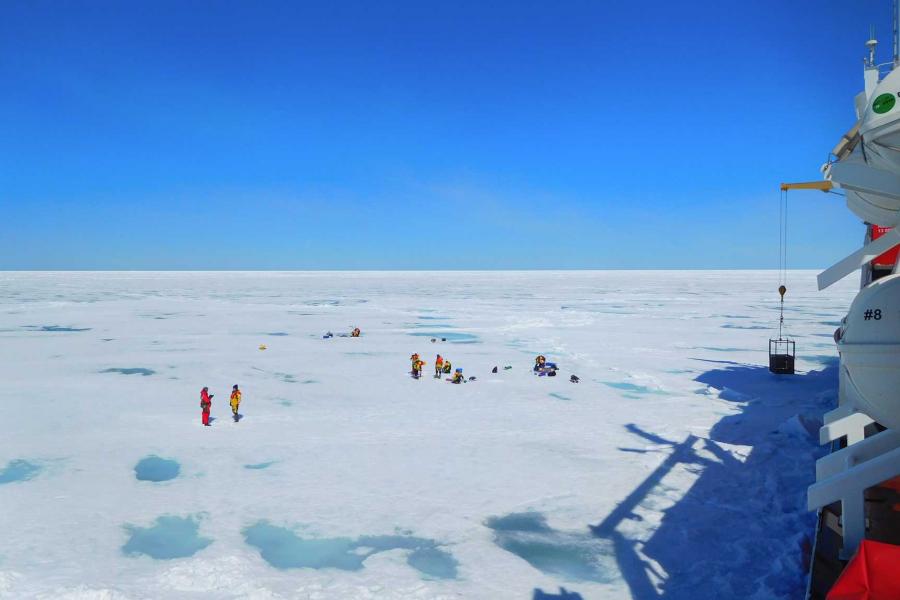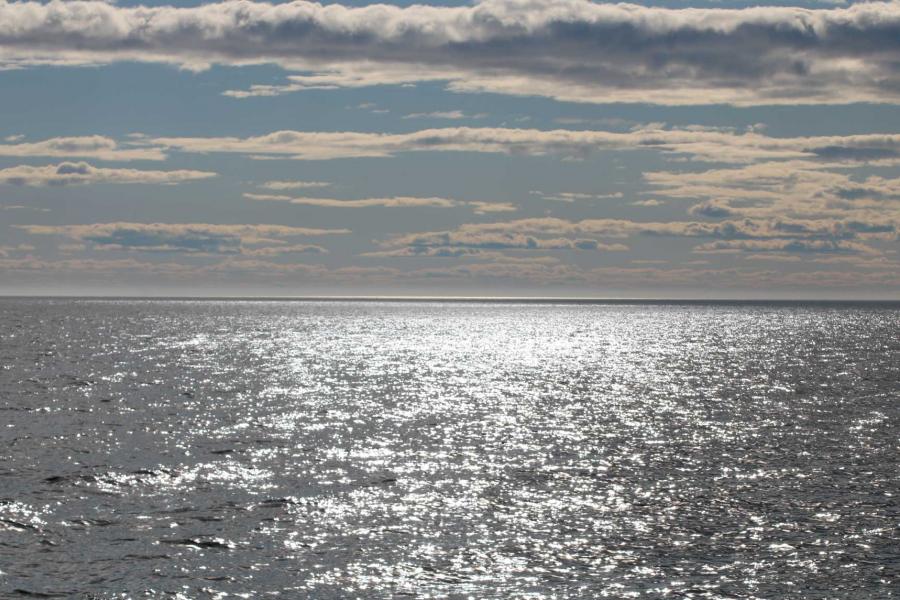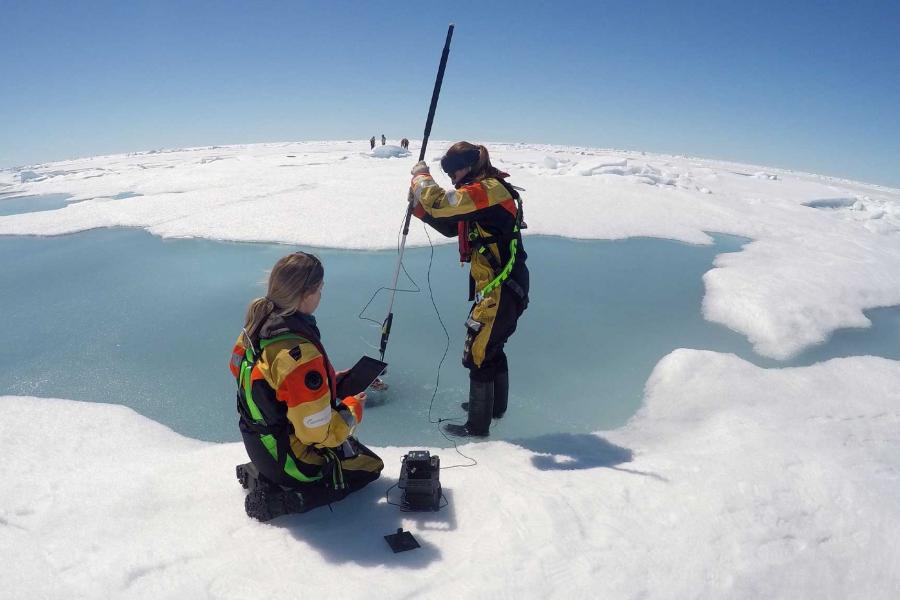Tracking the Propagation of Light from Underneath the Ice to Open Water
- Hudson Bay System Study (BaySys)
- Lisa Matthes
Sea ice acts as a blanket covering a large water mass during the winter months. It limits the amount of heat and gas transfer between the ocean and atmosphere and reduces the level of solar radiation entering the water column underneath. While almost 90 per cent of the incident light is reflected by the snow-covered ice surface, less than one per cent reaches the bottom of the ice in early spring. Ice and snow crystals as well as impurities like soot, sediments and ice biota absorb and reflect the light beam on its way downwards. With increasing temperatures in late spring, the snow cover turns into a mosaic of bare ice and freshwater melt ponds and the ice cover becomes more transparent. During this time, the darker surface of the ponds only reflects 60 per cent to 40 per cent of incident solar radiation, therefore light levels at the ice bottom are sufficient for ice algae and, early in the summer, for under-ice phytoplankton growth. However, the timing and location of large under-ice phytoplankton abundance remain understudied which make under-ice optical measurements essential.


he 2017 Hudson Bay wide cruise on board the CCGS Amundsen, as part of the BaySys project created a unique opportunity for us, Team Optics from the University of Manitoba and Université du Québec à Rimouski, to study these dramatic changes in underwater light availability from the beginning of ice melt in spring to large areas of open water in summer. Important to us is, how much light is transmitted through the ice layer, with different surface characteristics, and how the light quantity and quality changes with increasing water depth. Variations in the light quantity provides information about the amount of suspended material or material which is dissolved within the water. For example, chlorophyll in algal cells absorbs light of specific wavelengths, so that the strength of absorption of these wavelengths gives us an estimate of how much algal biomass is in the water column. Another factor we are interested in is the light reflection of particles such as phytoplankton and sediments also known as backscattering signal. It differs significantly from the water and can be detected by satellites after the ice cover disappears. Remote sensing of the backscattering signal of sediments can be used to trace river plumes into the ocean as well as monitor coastal erosion and sedimentation. Remote sensing also provides information about chlorophyll concentration and algae abundance over a large scale. However, the algorithms to distinguish between the different backscattering signals need to be validated with data collected in field which was the reason for our large optical set up on board the Amundsen.

It was planned to deploy a variety of sensors attached to large metal frames to measure light propagation. These instruments measure wavelengths in both open and ice-covered water, from the surface down to a depth where it is completely dark. Other instruments record particle size, light absorption and the backscattering signal. The collection and filtration of water samples from specific depths was meant to provide additional information about the concentration of particulate and dissolved material such as algal pigments, particulate carbon and coloured dissolved organic matter. Simultaneous measurements of incident solar radiation and its reflection at the water and ice surface were supposed to complete the picture of the amount of light penetrating the ice cover and water column and how its propagation is affected by the different components.
To be able to answer our research questions, it was necessary to arrive in Hudson Bay when it was still significantly ice-covered. However, our ship was needed in the water around Newfoundland for ice breaking which increased the delay of our travel up North. Consequently, the possibilities to fully monitor changes in light transmission, river sediment load and algal productivity with sea ice melt progression quickly vanished and our cruise got finally cancelled. Now, our hopes are placed on a repetition of a bay wide cruise next year to answer our questions and to contribute to the knowledge about the link between spectral light distribution and the concentration of dissolved and particulate matter in the water column during sea ice melt.
BaySys Optics Team on board the Amundsen:
CEOS: Lisa Matthes, Atreya Basu, Christopher Peck and Jens Ehn
UQAR: Lucas Freitas-Barbedos
